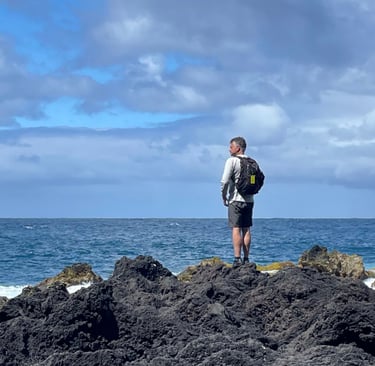I Don't Fix People
Mike O'Connor
10/6/20253 min read
Touch without fixing.
Sometimes people come thinking one session will fix them. Or they’ve been to many doctors and tried many other approaches — and that is all good — but because they are exhausted, they seek immediate change, something to measure. I get that. But healing doesn’t follow a script, and I don’t believe in forcing the process just to meet an expectation.
In these situations, they usually have a fixed idea of how they will be fixed — whether it’s immediate pain relief or for trauma to disappear in an hour. It’s in these moments I step back, and I get off their train of thought. I want to see the whole picture.
That’s especially clear in moments of deep grief, where no fix is even possible. Once someone came whose partner had recently passed. The strength in the meeting and the session was because I had to think: “Not only do I not know how to fix that — I actually can’t." The person is gone, obviously. But I’m curious what comes up in a session and how it can be supportive. What does the body need? Their body knows. I don’t. So my role isn’t to intervene — it’s to stay close to what’s already present and unfolding.
I offer space to see what comes up — to listen to their words and their body, to point out what they might not be seeing, or mirror what they’re feeling. Touch brings awareness to areas they might not have a habit of directly paying attention to. They might have anxiety in the belly or anger in the back that they didn’t realize until touch is brought to those areas.
They have to be willing to have a dialogue — to say what they’re thinking or feeling, especially when I say something that doesn’t match their experience. This exchange matters. Without it, the session risks becoming one-sided — and that’s not the kind of work I do.
Sometimes I take risks in what I say. There’s a reason a feeling or thought comes up — something in space brings this idea. It’s an accumulation of noticing their tones of voice or micro-expressions. You can sense something. Or maybe the different stories they told paint some kind of picture. I don’t help them if I keep it to myself. I may be wrong, but I try to find a way to say it — and then we take it from there. If it’s wrong, usually it’s not a big deal. It doesn’t resonate with them. If it’s true, it’s a way to go deeper. And if it’s simply a new thought, then it just drives the conversation.
This way of paying attention doesn’t stay inside the bodywork session. It carries over into how I understand leadership too This sensing can relate to leadership because you need to feel and sense those you are working with. People aren’t robots.
There’s also self-leadership. You can see this kind of self-agency in action during the retreats I host. In the retreat, there was an example — on one of the hikes, we stopped at a waterfall to swim. But one participant wanted to carry ahead on their own. Leaving the group was important for them at that moment. They found a beautiful spot and rested there alone for a while. They sensed what they needed and took initiative. It doesn’t seem like a big deal, but for someone who is used to following within a group, having that urge, noticing it, acting on it, communicating it clearly, and enjoying it — and returning to still be part of the group — is them navigating their own life successfully. Moments like that might seem small, but they carry a lot. They’re the shifts that matter most.
And that’s the aim of this work. Allowing people to shorten the distance between sensing what they want and acting on it. If trauma is what holds us back in the present, then healing is the gradual shortening of our ability to act and not feel stuck. And that doesn't come from someone outside fixing a person, but the person's own ability to sense themselves. And that is what sessions help support.




